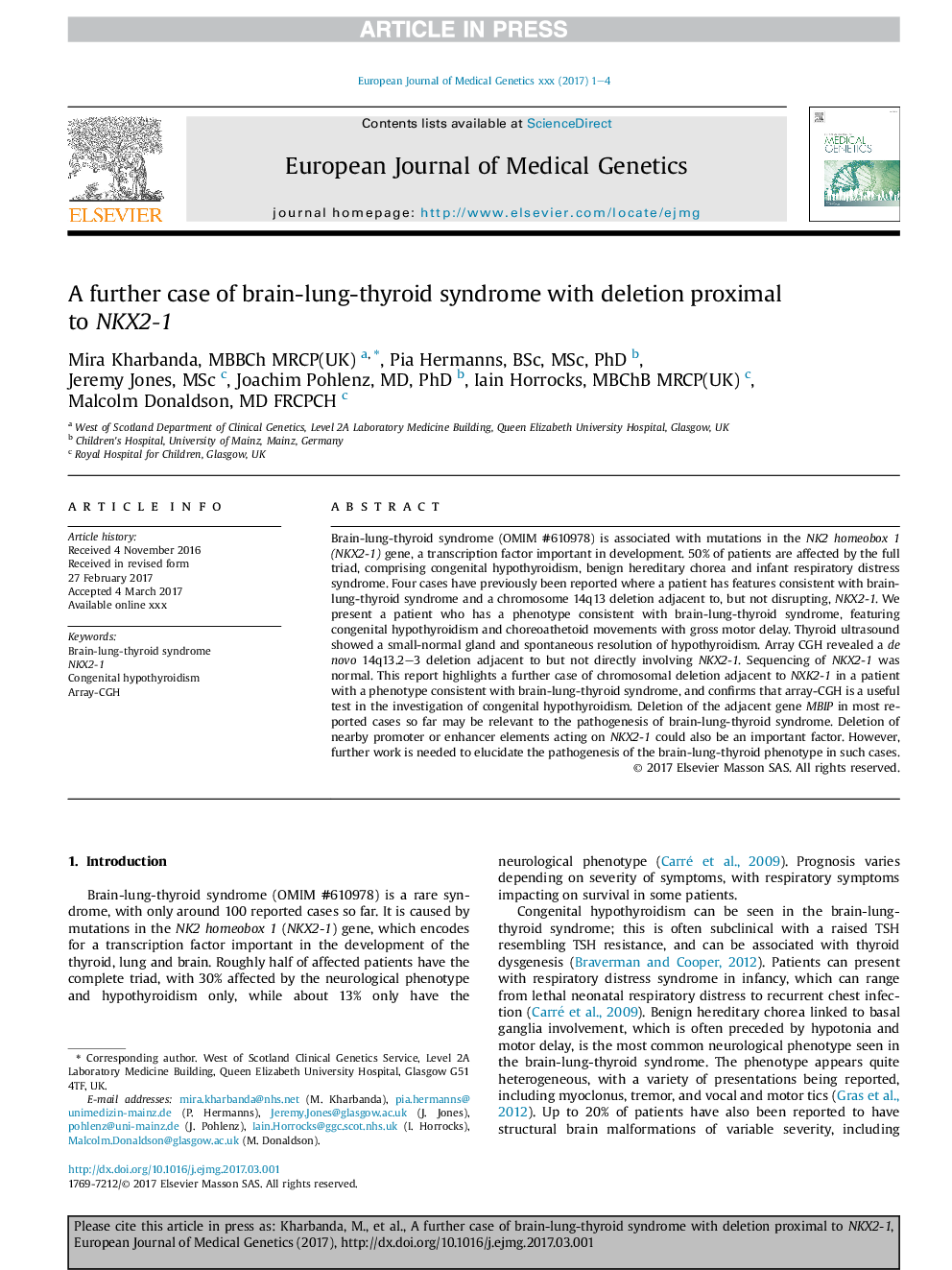| Article ID | Journal | Published Year | Pages | File Type |
|---|---|---|---|---|
| 5589013 | European Journal of Medical Genetics | 2017 | 4 Pages |
Abstract
Brain-lung-thyroid syndrome (OMIM #610978) is associated with mutations in the NK2 homeobox 1 (NKX2-1) gene, a transcription factor important in development. 50% of patients are affected by the full triad, comprising congenital hypothyroidism, benign hereditary chorea and infant respiratory distress syndrome. Four cases have previously been reported where a patient has features consistent with brain-lung-thyroid syndrome and a chromosome 14q13 deletion adjacent to, but not disrupting, NKX2-1. We present a patient who has a phenotype consistent with brain-lung-thyroid syndrome, featuring congenital hypothyroidism and choreoathetoid movements with gross motor delay. Thyroid ultrasound showed a small-normal gland and spontaneous resolution of hypothyroidism. Array CGH revealed a de novo 14q13.2-3 deletion adjacent to but not directly involving NKX2-1. Sequencing of NKX2-1 was normal. This report highlights a further case of chromosomal deletion adjacent to NXK2-1 in a patient with a phenotype consistent with brain-lung-thyroid syndrome, and confirms that array-CGH is a useful test in the investigation of congenital hypothyroidism. Deletion of the adjacent gene MBIP in most reported cases so far may be relevant to the pathogenesis of brain-lung-thyroid syndrome. Deletion of nearby promoter or enhancer elements acting on NKX2-1 could also be an important factor. However, further work is needed to elucidate the pathogenesis of the brain-lung-thyroid phenotype in such cases.
Related Topics
Life Sciences
Biochemistry, Genetics and Molecular Biology
Genetics
Authors
Mira MBBCh MRCP(UK), Pia BSc, MSc, PhD, Jeremy MSc, Joachim MD, PhD, Iain MBChB MRCP(UK), Malcolm MD FRCPCH,
